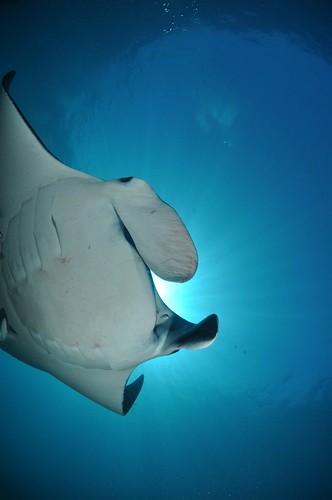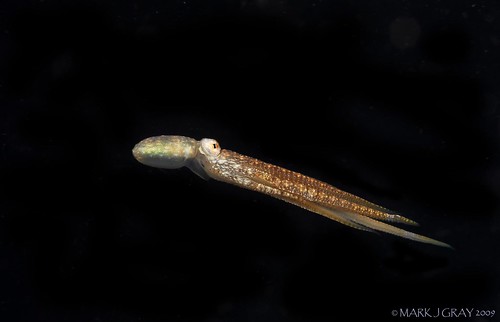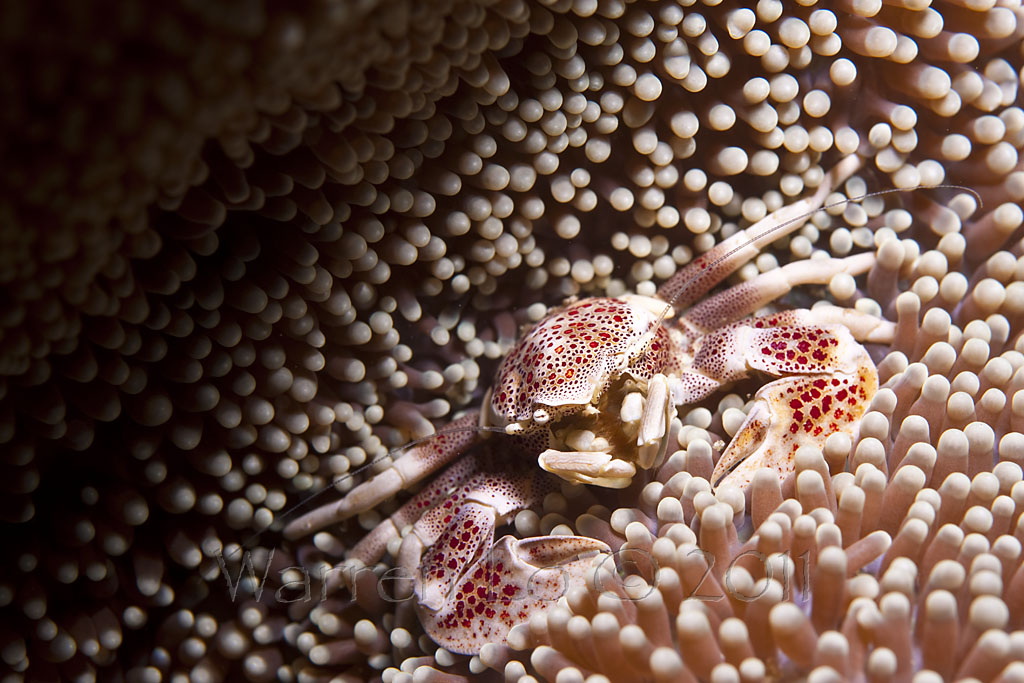Bill, Your nudi shot is absolutely lovely. Wish I had animals that looked like that where I dive. But the particular image is easy with a good point and shoot....you just have to know how to do it. In fact, the easiest to control is macro images (which is why I showed one also)..
Strobes today are controlled by time (that was not the case years ago), so the duration of the flash changes with the amount of light needed. If you only use a tiny amount of the flash, then you get a really short duration if you are using a leaf shutter. Focal plane shutter don't work that way (please review how they work to understand what limits a vertical shutter.)
http://www.mir.com.my/rb/photography/fototech/focalplane/index.htm
So if you have a camera with a 1/200th flash sync, and it is bright out, in shallow water, you can either:
1. Use a really high F stop and get a diffraction limited image, while making the water look dark and unnatural, or
2. Let a lot of the light in and while the strobe time is now really short, it's impact is minimal.
Neither would seem to be a good thing, for some images.
There is a place for the dark background, but not every image, and if you use both technologies, Dslrs are actually more difficult to control that balance.

But if you want to freeze motion, and let some light in, it can be done far better with a leaf shutter:

The G10... well you have to again, understand the technology... and know exactly which settings to use. If you just shoot a picture, using the jpeg and whatever the camera wants to use, you will get a crappy snap shot. Dpreview has lots of identical images taken at each camera's best setting, all you or anyone has to do is down load and look at them...but make sure they are the raw images.
I like the NEX -5, just not the lens that are available for it.
Please keep in mind that I only make prints up to 13 x 19 inches..if I wanted to something bigger, I would get a full frame camera and put it in a housing...
Strobes today are controlled by time (that was not the case years ago), so the duration of the flash changes with the amount of light needed. If you only use a tiny amount of the flash, then you get a really short duration if you are using a leaf shutter. Focal plane shutter don't work that way (please review how they work to understand what limits a vertical shutter.)
http://www.mir.com.my/rb/photography/fototech/focalplane/index.htm
So if you have a camera with a 1/200th flash sync, and it is bright out, in shallow water, you can either:
1. Use a really high F stop and get a diffraction limited image, while making the water look dark and unnatural, or
2. Let a lot of the light in and while the strobe time is now really short, it's impact is minimal.
Neither would seem to be a good thing, for some images.
There is a place for the dark background, but not every image, and if you use both technologies, Dslrs are actually more difficult to control that balance.
But if you want to freeze motion, and let some light in, it can be done far better with a leaf shutter:
The G10... well you have to again, understand the technology... and know exactly which settings to use. If you just shoot a picture, using the jpeg and whatever the camera wants to use, you will get a crappy snap shot. Dpreview has lots of identical images taken at each camera's best setting, all you or anyone has to do is down load and look at them...but make sure they are the raw images.
I like the NEX -5, just not the lens that are available for it.
Please keep in mind that I only make prints up to 13 x 19 inches..if I wanted to something bigger, I would get a full frame camera and put it in a housing...












